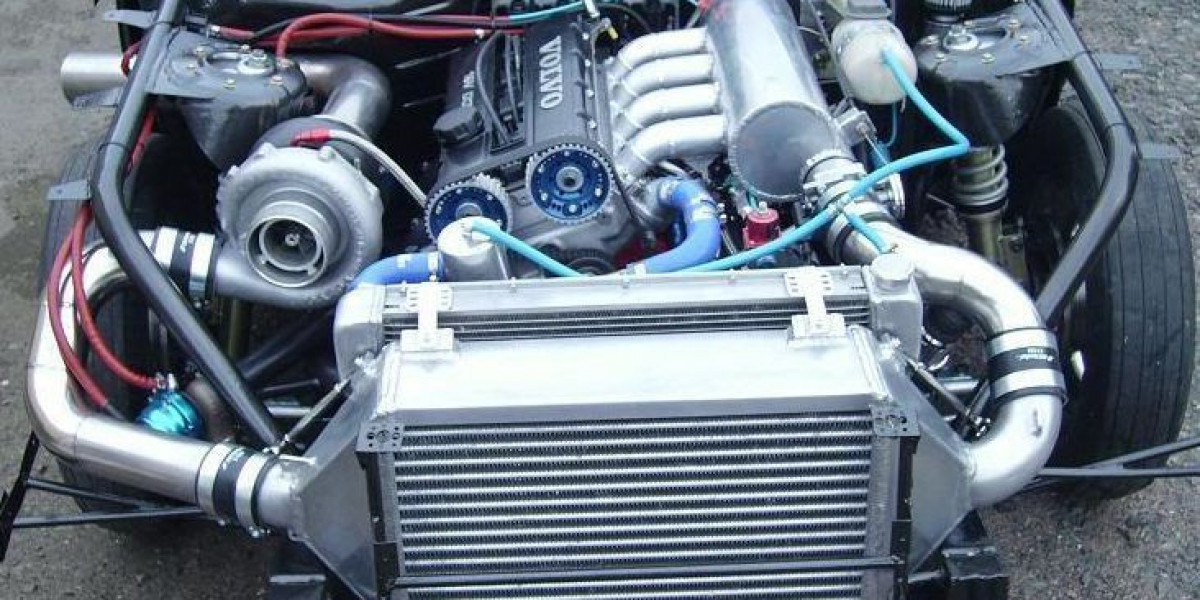The automotive intercooler market plays a critical role in the performance and efficiency of internal combustion engines, particularly in turbocharged and supercharged vehicles. Intercoolers help reduce intake air temperature, enhancing engine power output and fuel economy. Despite growing demand for energy-efficient and emission-compliant vehicles, the industry faces numerous challenges that could impede its progress and slow market penetration in certain regions.
This article highlights some of the most pressing challenges impacting the global automotive intercooler market, ranging from technological changes to manufacturing limitations and regulatory pressures.
1. Shift Towards Electric Vehicles (EVs)
One of the most transformative challenges for the automotive intercooler industry is the accelerating shift toward electric vehicles. Unlike internal combustion engines, EVs operate on electric drivetrains and do not use turbochargers or superchargers, eliminating the need for traditional intercooling systems.
As global governments push for clean energy transitions and zero-emission targets, automakers are investing heavily in EV production. With EV adoption rising rapidly, the market for intercoolers is expected to shrink, especially in regions aggressively phasing out fossil fuel vehicles. While hybrids still use combustion engines and may require intercoolers, the long-term trend leans toward full electrification, posing a serious challenge to sustained growth.
2. High Costs of Advanced Intercoolers
Modern intercoolers, particularly air-to-liquid systems, offer better performance but come with higher manufacturing costs. These systems require precise engineering, quality materials such as aluminum and composites, and seamless integration with vehicle cooling circuits.
In cost-sensitive markets, especially across Asia and Africa, these premium systems may be considered non-essential, particularly in lower-end vehicles. Automakers often face pressure to keep vehicle prices competitive, and intercoolers can be one of the first components sacrificed in entry-level models. Balancing cost-efficiency with performance continues to be a major industry hurdle.
3. Space Constraints in Compact Vehicle Designs
The trend toward smaller, more efficient vehicles has led to increasingly compact engine compartments, leaving limited space for auxiliary systems like intercoolers. Traditional air-to-air intercoolers need significant frontal space and unrestricted airflow, making integration challenging in tightly packed designs.
Automakers must engineer more compact and customized intercooler solutions to fit into modern engine bays without compromising performance. This not only adds to design complexity but also raises development and manufacturing costs, making intercooler integration more difficult in budget vehicles and compact cars.
4. Regulatory Pressures and Compliance Costs
Environmental regulations worldwide continue to evolve, pushing automakers to reduce vehicle emissions and improve thermal efficiency. While this encourages turbocharging and intercooler adoption, it also introduces stringent regulatory requirements for component performance and durability.
Manufacturers must invest heavily in research, development, and compliance testing to meet standards such as Euro 6, BS-VI, and CAFE. These regulations vary by region, making global compliance an expensive and complex task. For smaller players in the market, meeting regulatory benchmarks can become a barrier to entry or expansion.
5. Limited Innovation and R&D Budgets for Smaller Manufacturers
Larger automotive component suppliers can afford to invest in continuous innovation and R&D, developing high-efficiency intercoolers and advanced cooling technologies. However, smaller and mid-sized companies often lack the capital and technical infrastructure to compete at this level.
As a result, they may fall behind in offering next-generation solutions such as lightweight intercoolers, integrated systems, or modular designs. The lack of innovation capability becomes a disadvantage in a market where differentiation and performance gains are highly valued by OEMs and end-users alike.
6. Global Supply Chain Disruptions
The automotive industry has faced repeated supply chain disruptions, from semiconductor shortages to raw material delays. The intercooler segment has also been affected by volatility in the availability and pricing of aluminum and specialized composites.
Unpredictable logistics, rising transportation costs, and delays in receiving critical components have challenged manufacturers’ ability to meet deadlines and fulfill OEM orders. In some cases, these issues have caused production backlogs, delayed vehicle launches, or forced cost increases that impact overall profitability.
7. Market Saturation in Developed Regions
In mature automotive markets like Europe, Japan, and North America, the intercooler market is already saturated, with most turbocharged vehicles equipped with standard intercooling systems. In such markets, growth is driven primarily by replacements, upgrades, or performance-focused customizations.
This saturation limits new sales opportunities and forces companies to focus on aftermarket services, which are often unpredictable and fragmented. Additionally, aftermarket sales are impacted by consumer awareness, installation costs, and local regulations, making this a difficult segment to rely on for consistent growth.
8. Complexity in Aftermarket Adoption
Although the aftermarket provides a potential revenue stream, it also presents several challenges. Intercooler upgrades often require additional modifications, such as ECU tuning, bracket replacements, and airflow adjustments. These upgrades can void warranties, increase installation costs, and reduce mass-market appeal.
Moreover, in regions with stricter automotive regulations, aftermarket modifications may not be permitted or could lead to compliance issues. This reduces the scope of aftermarket growth, especially in countries with rigid automotive standards and limited customization culture.
Conclusion
The automotive intercooler market, while essential in turbocharged engine performance, faces a complex mix of challenges that threaten to slow its growth and reduce its long-term relevance. From the shift to electric vehicles and high production costs to regulatory pressures and space limitations, the road ahead is filled with obstacles that demand strategic innovation and adaptability.
To thrive in this evolving landscape, manufacturers must invest in R&D, cost reduction, compact system design, and hybrid vehicle solutions while preparing for a future where electric mobility dominates. By addressing these challenges proactively, the industry can continue to play a vital role in optimizing internal combustion engine performance—even as the global transition toward electrification accelerates.
Discover more: https://www.pristinemarketinsights.com/automotive-intercooler-market-report









